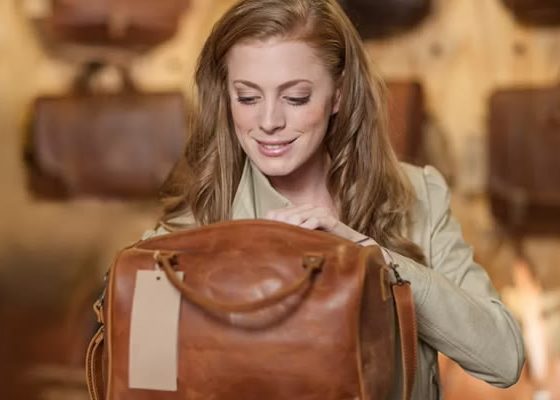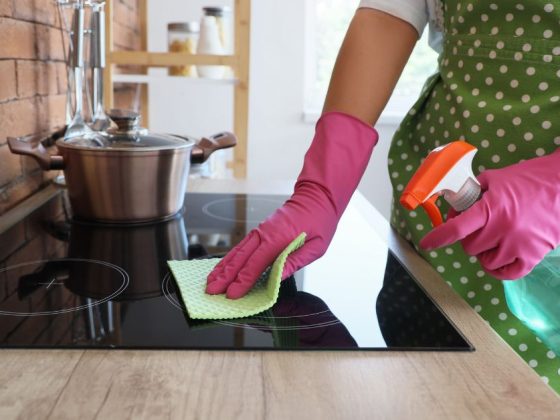Slipping and falling can be a genuine safety concern in various settings, but the right footwear can significantly mitigate this risk. Understanding the nuances of slip-resistant shoes empowers individuals to make informed choices, ensuring safety and comfort in different environments. Here’s a comprehensive guide to navigating the world of slip-resistant footwear.
Understanding Slip Resistance
What Makes a Shoe Slip-Resistant?
Shoe slip resistance primarily hinges on its traction and outsole composition. The outsole, typically made of rubber or specialized synthetic materials, is crafted to provide superior grip on various surfaces. Tread patterns, including hexagonal, circular, or lug designs, coupled with their depth, enhance the shoe’s grip on different terrains.
Testing and Standards
Measuring slip resistance involves the Coefficient of Friction (CoF), indicating the shoe’s ability to create friction and prevent slipping. This testing aligns with industry standards set by organizations such as ASTM (American Society for Testing and Materials) and SATRA (Shoe and Allied Trades Research Association), ensuring shoes meet specific safety criteria.
Differentiating Slip-Resistant from Other Types
It’s essential to discern between water-resistant and slip-resistant footwear. While both offer protection, slip-resistant shoes specifically focus on traction, ensuring stability and grip. Additionally, durability and longevity play a role in distinguishing slip resistance from other shoe features.
Identifying Your Needs
Work Environments
Different professions require distinct levels of slip resistance. Healthcare settings demand shoes that withstand spills and provide steady footing, while the restaurant and food industry necessitates shoes capable of handling greasy floors. Similarly, construction and industrial worksites need shoes that offer stability on rugged surfaces.
Lifestyle Considerations
Beyond work, everyday activities and hobbies should also dictate shoe choice. Outdoor enthusiasts may prioritize shoes with aggressive tread patterns for hiking, while those running errands might seek a balance between style and slip resistance. Fashion-forward individuals might lean towards trendy shoes designed with slip-resistant features.
Foot Morphology and Fit
Understanding one’s foot shape and arch type is crucial. Shoes that don’t fit properly can compromise both comfort and slip resistance. Ensuring the right size and accommodating the natural shape of the foot is essential for maximum effectiveness.
Features to Look For
Outsole Materials
Rubber compounds are a popular choice for slip-resistant shoes due to their natural grip properties. However, specialized synthetic materials are increasingly common, offering tailored features for specific environments and improved durability.
Tread Patterns
Various tread patterns, including hexagonal and circular designs or deeper lugs and grooves, cater to different terrains. The pattern and depth directly impact the shoe’s ability to provide traction, making it a crucial consideration when selecting slip-resistant footwear.
Support and Comfort
Insole cushioning, arch support, and ankle stability contribute to both comfort and slip resistance. Adequate support not only ensures a more comfortable experience but also aids in maintaining stability, especially during extended periods of wear.
Brands and Models
Industry Leaders
Companies like Nike, Skechers, and Merrell offer a range of slip-resistant shoes. These brands incorporate innovative technologies and designs into their footwear, ensuring both functionality and style.
Specialized Brands
Brands like Shoes for Crews, MOZO, and Birkenstock focus specifically on slip-resistant footwear. Their specialization often leads to more tailored designs that cater to specific industry needs.
Consumer Favorites
Customer-reviewed and recommended picks offer valuable insights into the real-world performance of slip-resistant shoes. Social media buzz and online reviews can often highlight hidden gems or novel features that cater to individual needs.
Maintenance and Care
Cleaning Techniques
Proper cleaning methods are vital for maintaining slip resistance. Knowing how to clean and dry shoes without compromising their traction is key. Avoiding harsh chemicals that might deteriorate the outsole is crucial for longevity.
Rejuvenation Methods
Over time, slip-resistant properties might diminish due to wear. Understanding methods to revive traction or extend the shoe’s lifespan through maintenance routines ensures prolonged effectiveness.
Making the Right Purchase
Budget Considerations
Balancing cost and quality is essential. Investing in a higher-quality pair often pays off in terms of longevity and consistent slip resistance. However, budget-friendly options also exist without compromising safety.
Trial Period and Return Policies
Ensuring the shoe fits well and meets the intended purpose is crucial. Trial periods and flexible return policies allow for reassessment if the shoe doesn’t fulfill expectations.
Expert Consultation and Fitting Services
Specialty shoe stores often offer guidance on selecting the right shoe for specific needs, considering both function and comfort. Online resources also provide fitting guidance and expert advice.
Making an informed decision when choosing slip-resistant footwear means considering various factors beyond superficial appearance. Understanding the composition of slip-resistant shoes, the testing standards they adhere to, and the nuanced differences in tread patterns and outsole materials is paramount in ensuring both safety and comfort.
Maintenance and Care
Keeping slip-resistant shoes in top condition involves adopting proper cleaning techniques. Using mild cleaning agents and following recommended washing and drying procedures help retain the outsole’s slip-resistant properties. Harsh chemicals can compromise the outsole’s integrity and reduce its effectiveness, underscoring the importance of gentle cleaning methods.
Moreover, understanding rejuvenation methods for slip-resistant shoes is vital for extending their lifespan. Over time, wear and tear can diminish the shoe’s slip-resistant features. Implementing specific techniques to revive traction or employing maintenance routines not only ensures prolonged effectiveness but also maximizes the investment made in these specialized shoes.
Making the Right Purchase
Balancing budget considerations with quality and functionality is pivotal. While investing in a higher-priced, higher-quality pair can offer extended durability and consistent slip resistance, there are budget-friendly options that don’t compromise safety. Careful consideration of personal needs and the intended environment of use aids in making a balanced decision.
Moreover, trial periods and flexible return policies are essential to ensure the shoe fits well and serves its purpose. The ability to reassess and return if the shoe doesn’t meet expectations adds a layer of assurance in the purchasing process. Expert consultation and fitting services, whether in specialty shoe stores or through online guidance, provide invaluable assistance in choosing the right shoe that combines function, safety, and comfort.
Understanding the complex world of slip-resistant shoes is more than just a matter of preventing slips and falls. It’s about ensuring safety without compromising comfort, and navigating the array of choices demands a deep dive into the multifaceted aspects that make a shoe truly slip-resistant. From cleaning routines that preserve the shoe’s efficacy to the careful selection process that balances cost and quality, each decision contributes to a safer, more secure step in any environment.
Brands and Models
Exploring the diverse landscape of slip-resistant shoe brands and models unveils a spectrum of options tailored to various needs and preferences. Industry leaders such as Nike, Skechers, and Merrell offer not only sleek designs but also innovative technologies engineered for slip resistance. These brands cater to a wide range of activities and settings, ensuring both functionality and style.
Specialized brands like Shoes for Crews, MOZO, and Birkenstock delve deeply into the domain of slip-resistant footwear, offering specialized designs that cater specifically to industry needs. Their focused approach often results in shoes optimized for specific environments, ensuring maximum safety and reliability in diverse work settings.
Consumer favorites, which often emerge through customer reviews and recommendations, provide invaluable insights into the practical, real-world performance of slip-resistant shoes. Social media buzz and online reviews shed light on hidden gems or unique features that resonate with individual needs, helping users make informed choices based on peer experiences.
Maintenance and Care
The longevity and effectiveness of slip-resistant shoes heavily depend on proper maintenance and care. Understanding the intricacies of cleaning techniques is crucial. Using mild detergents and following recommended washing and drying procedures can preserve the outsole’s slip-resistant properties, ensuring continued safety and reliability.
Moreover, adopting rejuvenation methods can help extend the shoe’s lifespan. Over time, natural wear and tear may reduce the shoe’s slip-resistant features. Implementing specific methods to revive traction or incorporating regular maintenance routines not only prolongs the shoe’s effectiveness but also safeguards the initial investment made in these specialized shoes.
Making the Right Purchase
Striking a balance between budget considerations and quality is a crucial aspect of making an informed purchase. While investing in a higher-priced, higher-quality pair can ensure extended durability and consistent slip resistance, there are also affordable options available that maintain safety standards without compromising performance.
Trial periods and flexible return policies play a pivotal role in ensuring the chosen shoe fits well and serves its intended purpose. This flexibility allows for reassessment and exchange if the shoe doesn’t meet expectations. Expert consultations and fitting services, both in physical specialty shoe stores and through online guidance, provide essential support in choosing the ideal shoe that harmonizes function, safety, and comfort.
Understanding the intricate nuances of slip-resistant footwear goes beyond a mere safety concern; it’s about ensuring comfort and confidence in various environments. Each section, from exploring different brands and models to understanding maintenance and making the right purchase, contributes to a comprehensive understanding of the crucial elements in choosing the most suitable slip-resistant shoe.














